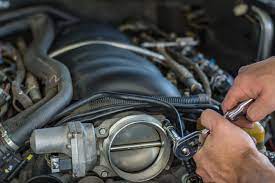You might be wondering how to fix reduced engine power on your car. You can try replacing certain parts like the catalytic converter or the throttle valve. You can also try replacing the throttle actuator control system. If none of these fixes work, you can always take your car to the mechanic. It will cost you a few dollars, but it will save you time and hassle. Follow the steps below and you will be on your way to increased engine power.
Replace throttle valve
The message “Reduced Engine Power” can pop up for a variety of reasons, depending on the vehicle model. While DTCs can guide you in the right direction, they don’t provide a full diagnosis of the problem. A good rule of thumb is to replace the throttle valve, if necessary. Listed below are a few things to consider before replacing the valve. If the message persists, you might want to try replacing the ECU.
The throttle body is a series of parts that controls the amount of air entering the engine. A broken or faulty butterfly valve will cause the car’s engine to receive less air than is necessary. It can also become clogged with carbon, reducing air intake and causing a reduced amount of power. Thankfully, replacing the whole throttle body is much cheaper than individual parts. However, if the valve is badly damaged, you should consider replacement.
Besides a dirty throttle body, other causes of reduced engine power include a faulty turbo or a malfunctioning electronic throttle actuator control. A new throttle valve can cost anywhere from $100 to $500. If it is the last step in your vehicle’s repair process, make sure to take the vehicle to a mechanic. Replacement parts may vary depending on the model and type of car. If you need to replace a valve, you should always consult a mechanic before making the repair.
Replace catalytic converter
Reduced engine power can be caused by a number of different issues. Some of the most common problems include a faulty oxygen sensor, a slipping clutch, or low transmission fluid. Other causes of engine power loss can come from a clogged catalytic converter, which is the part of the exhaust system responsible for reducing emissions and enhancing efficiency. Even if you don’t suspect a catalytic converter problem, you can still find the faulty ECU or other engine parts that are causing a loss of power. Replacing the ECU can be an expensive and time-consuming option.
When your car’s oxygen sensors detect an issue with your car’s oxygen supply, the message “Reduced Engine Power” will display on the center console. While this can be frustrating, it’s important to fix the problem and restore engine power as soon as possible. Oftentimes, you can bypass the reduced engine power indicator and secure your vehicle. However, you must clean the sensor quickly to avoid failure. The sensor is made of sensitive material and should be replaced with a fresh one.
The next time you experience reduced engine power, be sure to check your oxygen sensors. Oxygen sensors monitor the amount of oxygen leaving the car’s exhaust system, and adjust the air-fuel mixture to ensure proper combustion. If yours are faulty, the oxygen sensors can also lead to reduced engine power and reduced engine performance. In some cases, it can even lead to engine failure. It is important to repair your car as soon as possible to prevent any further damage.
Replace throttle actuator control system
The most common cause of “reduced engine power” light is the electronic throttle actuator control system. This electronic system has replaced the mechanical throttle body in modern cars. Two accelerator position sensors are used to calculate the appropriate throttle response, and the engine control unit masterminds both of them. A clogged air filter is an easy fix. However, if your vehicle continues to give you reduced engine power, you should replace the throttle actuator control system as soon as possible.
Your car’s ECU is the most important part of the vehicle. It controls almost every aspect of the car’s operation, and a faulty ECU can cause this warning light to illuminate. In most cases, you can repair the throttle actuator control system yourself, but you should know that it’s a more complex process than you might think. An OBD II scanner is needed to diagnose a malfunctioning ECU.
The sensors used to be separate parts, which you can replace if the problem persists. Most modern vehicles now have sensors that can be adjusted, rather than relying on a traditional throttle cable. A failed throttle actuator control system can lead to poor performance, rough idle, stalling, and an illuminated check engine light. To determine whether or not you need to replace this part, make sure to follow the manufacturer’s instructions.

